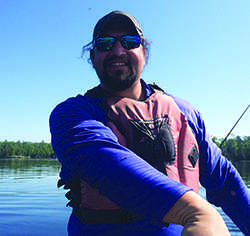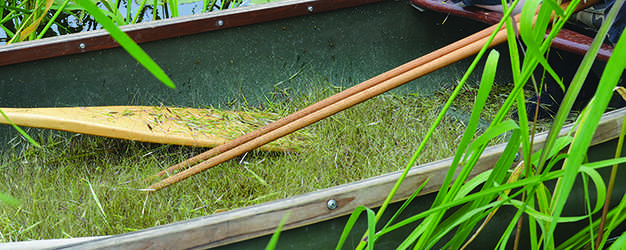Harvesting wild rice empowers Ojibwe students
The Ojibwe collect the wild rice by using canoes.
Despite little knowledge and few skills, the Ojibwe youth of the Lac Courte Oreilles Ojibwe School in Hayward, Wis. are able to harvest and process Manoomin, a type of wild rice, for the first time. Now knowing the process of harvesting Manoomin, the youth are practicing a tradition that has been part of their heritage for thousands of years.
Wild rice is an aquatic grass which is grown in water four to five feet deep. This rice is harvested by canoeing near the grass and slightly tapping the end of the grass and collecting the rice that falls. The harvesting season of wild rice occur between August and September. Jason Bisonette, language teacher and coordinator of the LCO Ojibwe School, explained the importance of getting all of his students out to harvest during the harvesting period. “To me, it is important to have all of the students experience harvesting wild rice and I do what I can to get all the students out and learn how to do this tradition.”
On Oct. 13, the presentation “Manoomin: How Wild Rice Empowers Ojibwe Youth,” was held on campus in Nohr Gallery. The presentation discussed the way Bisonette teaches Ojibwe students to harvest Manoomin. Because Bisonette is of Ojibwe ancestry, he is able to give them knowledge about how wild rice was harvested many generations before them. University of Wisconsin-Platteville history professor, Eugene Tesdahl, is a colleague of Bisonette and together they spoke more about Bisonette’s teaching curriculum at LCO Ojibwe School. Bisonette was able to come to campus because of a friendship between Tesdahl and Dave Lepley.
“Tesdahl was friends with Lepley and after [Lepley] retired from the service, he taught for many years and taught at LCO Ojibwe School. So that is how I was able to present down here.” Bisonette explained.
The Ojibwe Native American tribe is one of the most populous and distributed tribes in North America. The Ojibwe call themselves “Anishinaabeg” which means “True People” or “The Original People.” The Ojibwe have been around the Midwest region for thousands of years and started to move to the Midwest around the 1700s. Today, most Ojibwe tribes are located in the Great Lakes region. They settled near the Great Lakes because of the vast supply of Manoomin located therein.
“The main reason Ojibwe are around northern Wisconsin and areas near the Great Lakes is because of wild rice,” Bisonette said. “If it wasn’t for wild rice, there would be no Ojibwe. The importance of wild rice is why it is being taught in LCO.”
Bisonette’s main goal for the presentation was to give the audience a better understanding of Ojibwe people and also how he takes traditional practices from his culture and puts it into the minds of young Ojibwe students. A concern of his is that without this type of program continuing today, the language and culture of the Ojibwe may be forgotten.
“If we lose unique cultures, then what as a society have we become?” Bisonette said, “With what I am doing, I want to be able to create better Ojibwe people.”

Jason Bisonette harvess Manoomin.




